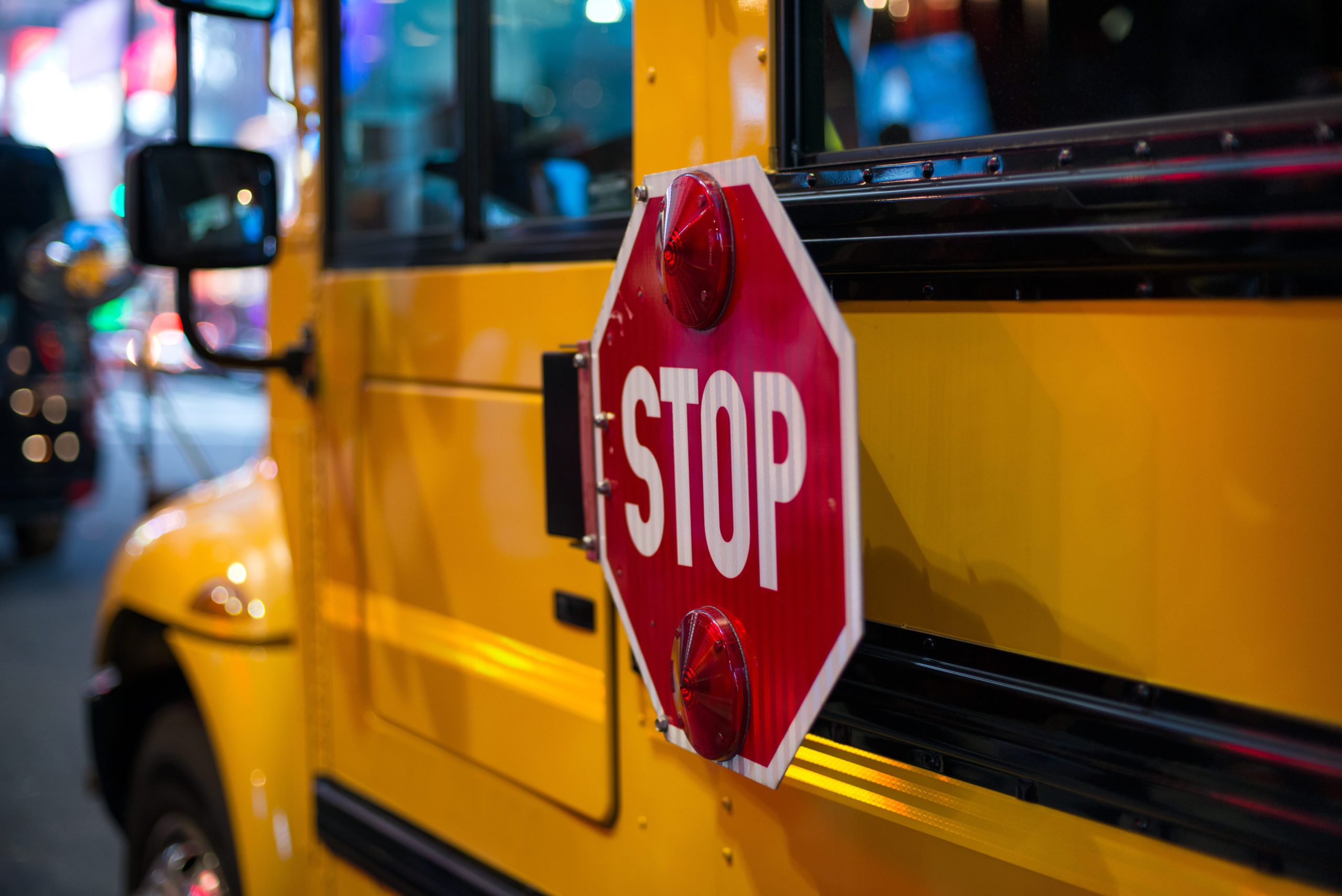Mahomet-Seymour board gets update on school, to revisit plan on Sept. 21

The Mahomet-Seymour School board is expected to vote at the Sept. 21 board meeting on whether or not to change the learning plan that the district has been engaged in since the school year started.
A presentation for Superintendent Lindsey Hall and District Nurse Nita Bachman at the Sept. 14 board meeting suggested that the district continue the hybrid learning model the district has been engaged in since Aug. 19.
At the beginning of the school year, 820 Mahomet-Seymour students chose to do a fully remote option. ISBE mandates a remote school option; Hall said that option is not being taken away.
Currently, students who chose the hybrid option at Middletown Prairie and Lincoln Trail Elementary go to school four days a week, Tuesday through Friday, for 2.5 hours in the classroom, then are provided educational opportunities remotely during the other school hours.
Mahomet-Seymour Junior High and High School students go to school in-person for 5.5 hours on an “A/B” schedule, then learn asynchronously on the days they aren’t in the building.
Bachman said that the district has had six positive cases amongst staff and students since Aug. 19, and 43 individuals who are currently quarantined due to exposure. With each positive case, it takes Bachman, the building’s principal and district administration about 4 hours to help with contact tracing and to notify parties involved.
Each time someone within the building is diagnosed with the COVID-19 virus, the classroom(s) is closed down to be cleaned, and teachers take their belongings and students to another location.
Bachman acknowledged the “incredible efforts” of the teaching staff for setting up systems that allow for easy access to contact tracing and the flexibility to move.
“These efforts have allowed us to implement mitigation practices to stay open,” she said.
Daily attendance at Mahomet-Seymour has remained consistent with years past. Currently, both in-person and remote learners are at 97.3-percent attendance whereas at the same time last year attendance was at 95.4-percent.
Bachman said the district has already seen a rise in strep and influenza cases among students.
“I would expect our attendance to drop a little,” she said.
The district will once again provide a flu clinic for members of the staff in 2020.
But overall, Bachman said that parents have been helpful in keeping their children home when symptoms arise and have been forthcoming with the school district when a family member tests positive for COVID-19.
Bachman and Hall’s recommendation comes on the back of what they have learned during the first four weeks of school.
The findings presented at the board meeting include:
- “The ability to identify close contacts at school is critical. Had we not been able to fairly quickly identify all persons who were within 6 feet of the positive person, we would have had to close entire buildings. We were able, by seating charts, video and personal interview, in each case, to provide CUPHD with a comprehensive list of those persons who were considered exposed (which is anyone within 6 feet of a positive case for a cumulative of 15 minutes).
- “Distancing is critical. Because we have half the number of students in the buildings at one time, we’ve been able to arrange classrooms, lunch areas, etc. in such a way as to allow us to quarantine relatively few students with each case. For example, at MPE, because students are spaced with only 2 children per table, rather than the normal 4 or 5, with tables close together. Only the children at the same table or immediately adjacent had to be quarantined.
- “After observing lunchtimes, in particular at the JH (junior high), we do not have the space to keep students physically distanced unless we utilize classrooms for lunch. The JH, in particular, has many issues with space and keeping kids physically distanced.
- “When students are quarantined due to close contact, parents get little notice in these changes in plans. If we return to full in-person learning, we can expect, and we will have, a greater number of students and staff who must quarantine, thereby increasing the numbers of remote learners.
- “Should the Board of Education elect to return all students to school (outside of those who are choosing off-campus/remote learning), we must keep Mondays as a professional development/collaboration/full remote day. Our teachers need this time to plan for the off-campus/remote learning aspect of our return to school plan. Other school districts have chosen to outsource this aspect of their learning plan. We did not choose that, and we must honor the time and training needed to make this work.”
“One of the things we have learned so far is that our plan is working,” Bachman said. “It’s become increasingly clear that it’s certainly not the preferred method of doing school; I get that, we all want kids in school.
“But to keep our kids learning in person as much as possible, we have to keep the course. We continue to see cases pop up. As you saw in the graphic I showed earlier, we’ve had 125 cases in Mahomet; it’s not just four or five.
“We’ve been able to keep our district down so far, but even today, parents are popping up as positive. I’m getting more and more calls every day.
“So, as people get out and about as people are doing things, cases continue to pop up.”
As of Sept. 15, Champaign-Urbana Public Health reports 13 active cases in area code 61853.
“We don’t have an end in sight right now for the pandemic,” Bachman said. “I know that it seems different, but it’s still there. And the flu is coming. We’re heading into flu season, and I strongly encourage the board to allow us to stay the course.”
Bachman said that she has talked to a lot of administrators, and every time they do the mitigation efforts, they feel like they “are barely hanging on.”
“It’s just waiting for the next shoe to drop.”
There have been times when the district’s efforts have been so succinct that they are ahead the Champaign-Urbana Public Health Department’s routine, Bachman reported.
She said that the process has worked on the athletic field, too.
“I’ve had athletes testing positive all summer,” she said.
Through videos, mask wearing and social distancing practices, Bachman said that the teams were able to trace student-athletes who had been exposed efficiently.
“We don’t have to close down a whole team,” she said.
“There’s no guarantee that this will continue to work, but I feel like we’re maintaining right now.
“If we fill our classrooms, and put all the kids back in too quickly, I fear that we’re going to have to close everything back down. I think that’s the opposite of what we want. I think that we want to keep moving forward, and not go backward.”
Board member Jeremy Henrichs wanted to know how many confirmed cases of COVID-19 were due to exposure within the school. According to Bachman, two cases, one confirmed and one diagnosed by a physician, are because of exposure at school.
“Thankfully, they were already in quarantine, so it didn’t affect additional individuals,” Bachman said.
Hall reported that “four of the six positives were completely unrelated (to school).”
Sixty-two Mahomet-Seymour staff and students have been exposed to COVID-19 at school as of Sept. 15.
Bachman said that those who test positive are quarantined for 10 days. Family members are quarantined for 14 days after their last interaction with the positive case. If a child has COVID-19, the parents would be quarantined for 14 days after the child’s 10 day quarantine period.
Bachman reported that other family members have tested positive after the child’s quarantine period is over.
“The incubation period is two to 14 days,” Bachman said.
Henrichs asked if the opposite was true, that positive cases have not turned into other family members getting COVID-19. Bachman said yes.
“But we don’t know which one that’s going to be,” she added.
Henrichs said that he believes it’s unfortunate that the expectation has changed from flattening the curve and not overriding the hospitals to take care of COVID patients to trying to limit cases.
“It’s impossible,” he said. “It won’t happen.
“So we’ve created an expectation that it is impossible for us to go back to full-time school. It’s not your fault, it’s our politicians’ fault because they’ve allowed it to happen.
“Other countries have found a way to get back to school, and do it every day. Somehow here in the US, we can’t get past it.”
The return to school in Euorpean countries has been well-documented recently. German schools returned about four weeks ago, seeing clusters of COVID-19 among the school population, and closing down initially. It has been deemed, though, that schools haven’t been identified as a driver of infections, according to the Washington Post.
COVID-19 spread in Germany doesn’t look quite like it does in the United States, though.
Germany, for example, has seen a spike in COVID-19 cases in the last month, recording 38,734 cases and 121 deaths. In April, they had 91,201 cases and 5,879 deaths, according to John Hopkins’ COVID-19 dashboard.
China, which reported a record-high 69,554 cases and 2,624 deaths in February, reported 940 cases and 32 deaths in the last month.
Comparatively, the United States hit a record high 1,925,693 cases with 60,583 deaths in July. Within the last month, 1,192,487 positive cases and 25,036 deaths have been reported.
Henrichs also approached the topic of recent reports of myocarditis being reported in athletes who have been COVID-19 positive, either asymptomatic or with mild symptoms.
A month ago, ESPN reported that a rare heart condition could be linked with COVID-19.
“Myocarditis, inflammation of the heart muscle, has been found in at least five Big Ten Conference athletes and among several other athletes in other conferences, according to two sources with knowledge of athletes’ medical care,” ESPN’s Paula Lavigne and Mark Schlabach wrote.
The findings tipped the scales for the Big Ten as it decided in August not to proceed with fall sports.
On Aug. 23, Billy Witz of The New York Times wrote that Dr. Curt Daniels, the director of sports cardiology at Ohio State, reported to Pac-12 and Big Ten leaders, “that cardiac M.R.I.s, an expensive and sparingly used tool, revealed an alarmingly high rate of myocarditis — heart inflammation that can lead to cardiac arrest with exertion — among college athletes who had recovered from the coronavirus.”
Daniels’ study “found myocarditis in close to 15 percent of athletes” who had COVID-19.
Similar data from Penn State and Ohio State team doctors has come under scrutiny lately, citing small samples and uncertainties related to the link between COVID-19 and myocarditis.
Whether or not Henrichs was directly linking his comments to these studies on Monday night is unclear, but he did broach the topic of long-lasting effects of COVID-19.
“The next hurdle is that we don’t know if these asymptomatic cases or mildly symptomatic cases have some sort of long-term effect, which is absolutely ridiculous. There’s zero scientific evidence of that. It’s pure speculation. Again we’re fear-mongering people.
“And we could say we don’t know. Sure, we don’t know a lot of things.
“We’re not thinking rationally anymore. We’re not speaking scientifically.”
Henrichs said that the only way around not having a clear definition of when school can reopen is to give the decision making to parents.
“We let the parents decide what is an acceptable risk for their children,” he said. “We give our teachers a chance to decide what is an acceptable risk for them to take regarding school. Then we have a cohort that is willing to accept the risk of going to school and one who is not.”
Henrichs acknowledged that there will be many more cases of COVID-19 as the winter months approach, but that there has to be some willingness to accept the risk.
Board member Lori Larson said that she read through almost all of the emails the board of education received: 18 in favor of in-person, 14 in support of the current hybrid model and nine in favor of remote learning only.
She said her biggest concern is everyone being out of school since March.
“I’m still for people having a choice,” she said. “ We have the staff to provide the remote learning; that does provide them the free education that they inquire about.
“If five (days) is too many; we’ve already said we’re going to have Mondays for our PD (professional development), however…
“There are several districts around here that are doing four days, that are 5.5 hours with a half-hour for lunch, and they have a remote day. However, if you look at the hours in the day, it’s like a 3-day week.”
Other Champaign County schools that are not doing remote learning, like Champaign Unit 4 and Urbana District 116, are much smaller in population than Mahomet-Seymour, and are able to maintain a social distance of six feet in the classroom and on the bus.
Larson said that a school district is more than teaching subject matter, though.
“We feed them, we take care of them, we clothe them, we provide social and emotional support for them.
“To me, it seems like a compromise. I’m very concerned.
She also cited the economic impacts of parents having to stay at home, students graduating at mid-term and students staying engaged online for over a long time period.
Board member Max McComb suggested that the district might consider trying the four-day a week option, knowing that winter break would be a natural time to separate students.
“If we took a run at daily school, and the wheels come off, I don’t want to wreck everyone’s holidays, but that’s a natural break where we have kids separated.”
McComb and board member Merle Giles wanted Hall to have conversations with Morton and Dunlap School Districts that are similar to the size of Mahomet-Seymour.
In the first few weeks of school Morton had several positive cases of COVID-19 among students and staff and a few hundred students have been quarantined from exposure.
Giles asked Hall to ask questions about how they have handled cases, what time did it take them to manage cases and how did they achieve that time.
“We could learn a little bit from that in talking to those schools,” Giles said.
McComb said the topic should be on next week’s agenda as an action item.




